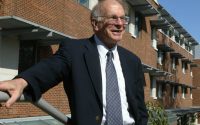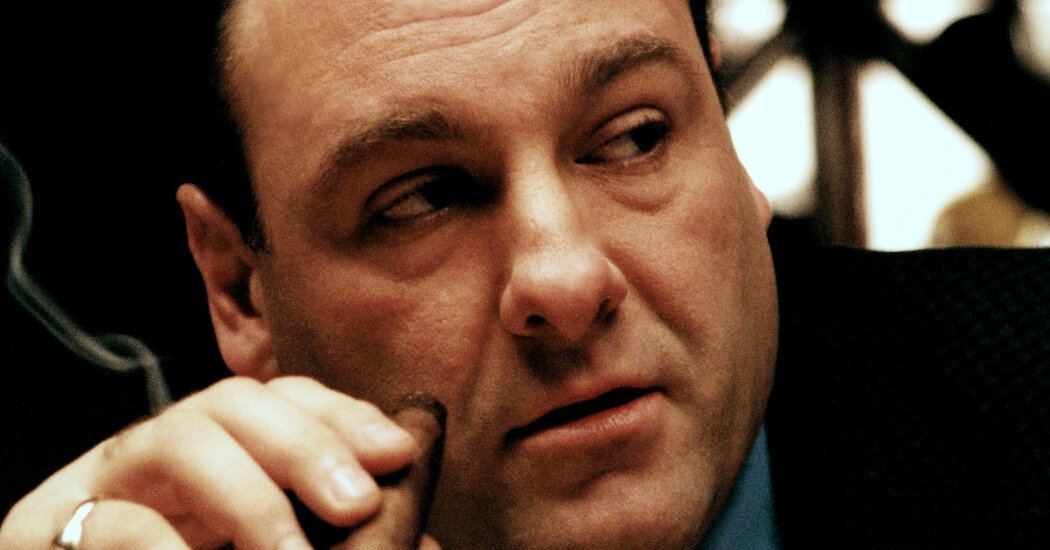Maria Emilia Martin, Creator of Public Radio’s ‘Latino USA,’ Dies at 72
Maria Emilia Martin, who founded “Latino USA,” which is now the longest-running public radio show in the country covering Latino communities, and who trained and mentored hundreds of journalists in Central and South America, died on Dec. 2 at a hospice facility in Austin, Texas. She was 72.
The cause was complications of surgery, said the NPR arts correspondent Mandalit del Barco, a protégée of Ms. Martin’s.
Ms. Martin was not planning on a career as a journalist. Like many of her peers, she had been inspired by the civil rights movement to think about organizing on behalf of her cultural heritage as a Mexican American
In the early 1970s, when she first heard KBBF, a Latino-owned and Latino-operated public radio station broadcasting out of Santa Rosa, Calif., where she was a social worker, she signed on as a volunteer to help produce a weekly talk show devoted to women’s issues, including sexuality, birth control and abortion. She was moved by the show’s powerful reach, and by the particular impact it had on low-income farm workers, who often called from pay phones with their questions so their husbands would not hear them.
One night a call came in from a woman who had taken an overdose of pills. As she recalled in her memoir, “Crossing Borders, Building Bridges: A Journalist’s Heart in Latin America” (2020), the woman asked for help because no one at the hospital where she was being treated could understand her. The idea that public radio could be not just a community resource but also a lifeline was, Ms. Martin wrote, an “aha moment” for her, and she was hooked.
She quit her social work job to join KBBF as news and public affairs director. She later moved to a station in Seattle. And she often worked as a freelancer.
In her memoir, she wrote about her challenges to get ideas approved and about comical exchanges with editors who complained, as one did when Ms. Martin was producing a series about efforts to encourage tourism in war-torn Nicaragua, that she had interviewed too many locals and not enough Americans.
She joined NPR in the 1980s and became the organization’s Latino affairs editor. But she still struggled to get her stories on the air, and she blamed the lack of diversity in management.
Frustrated, Ms. Martin left to work on a project, funded by the Ford Foundation and organized by the Center for Mexican American Studies at the University of Texas, Austin, to create a national Latino-focused radio program. That became “Latino USA,” with a mission to cover the Latin communities of all the Americas, not just the United States. It can now be heard on 386 public radio stations across the U.S. and Canada. When it first aired, in May 1993, President Bill Clinton attended its launch party.
During her decade-long tenure at “Latino USA,” the program covered elections in El Salvador and Indigenous activism in Bolivia, as well as stories closer to home, like the ravages of AIDS in the Latino community, the growing political power of Hispanic voters and the human face of immigration.
“Maria taught me how to look into the future based on data,” Maria Hinojosa, the longtime host of “Latino USA,” said by phone. “Latinos were at a tipping point in the population, and Maria believed that if you were not covering Latino reality on public radio, which has a stated commitment to diversity and reporting unheard voices, you were not practicing ethical journalism or excellent journalism. Period.
“Maria took this argument to members of Congress,” she continued, “who pressured the Corporation for Public Broadcasting to fund public radio to do so” — which led to Ms. Martin’s position as NPR’s first and only Latino affairs editor. “At NPR, this did not go well at first — it was seen as affirmative action, and temporary — which is why she went off and created ‘Latino USA.’”
Ms. Hinojosa continued: “Maria taught me to practice journalism with heart and humanity, and wherever I go, when I travel the country to tiny towns in the middle of nowhere, or in the airport in Oaxaca, Mexico, or in Alaska, people will stop me, weeping, and say, ‘Oh my god, you changed my life with your show.’ I’m the beneficiary, but Maria created that.”
Maria Emilia Martin was born on Jan. 28, 1951, in Mexico City. Her mother, Adela Garcia Ríos, was a secretary, and her father, Charles McGlynn Martin, was a journalist originally from Chicago and the son of Irish immigrants. Ms. Martin wrote that her bilingual, bicultural family gave her the sensibility and perspective of “the observer, the ‘outsider.’” She grew up in Arizona, Texas and San Francisco, and she recalled being punished for speaking Spanish in grade school.
She attended the University of Portland, in Oregon, and Sonoma State University, in California, before dropping out to work at KBBF. In 1999, she took a leave from “Latino USA” to earn a master’s degree in journalism from Ohio State University.
Ms. Martin said she was forced out of the program she created in 2003 because of conflicts over its mission. She moved to Antigua, Guatemala, and began producing a bilingual radio series focusing on the people of Central America in the aftermath of its many civil wars: stories about young Indigenous women wanting to wear modern clothing instead of their traditional garb, or of deeply traumatized individuals trying to recover from the massacres of their communities.
She also began training rural journalists in Guatemala, Bolivia and Nicaragua, and started an organization, GraciasVida, to do so. In the months before her death, she was reporting on the elections in her adopted country.
Ms. Martin is survived by her three siblings, Christina Schmalz and Frank and John Martin.
“Maria created aural journeys into battlefields of Central America, the farms of California and across the vast galaxy of ‘Latino culture,’” the journalist Michelle García, who was once a producer and reporter at “Latino USA,” wrote in a Facebook post. “She took you ‘there’ and built a multiracial, multiethnic audience along the way.”
Ms. Garcia added: “She gave meaning and purpose to the now overly used term ‘Representation Matters.’ And by doing so, she taught us what we could be, who we could be in the media world, and that we could be heard.”


